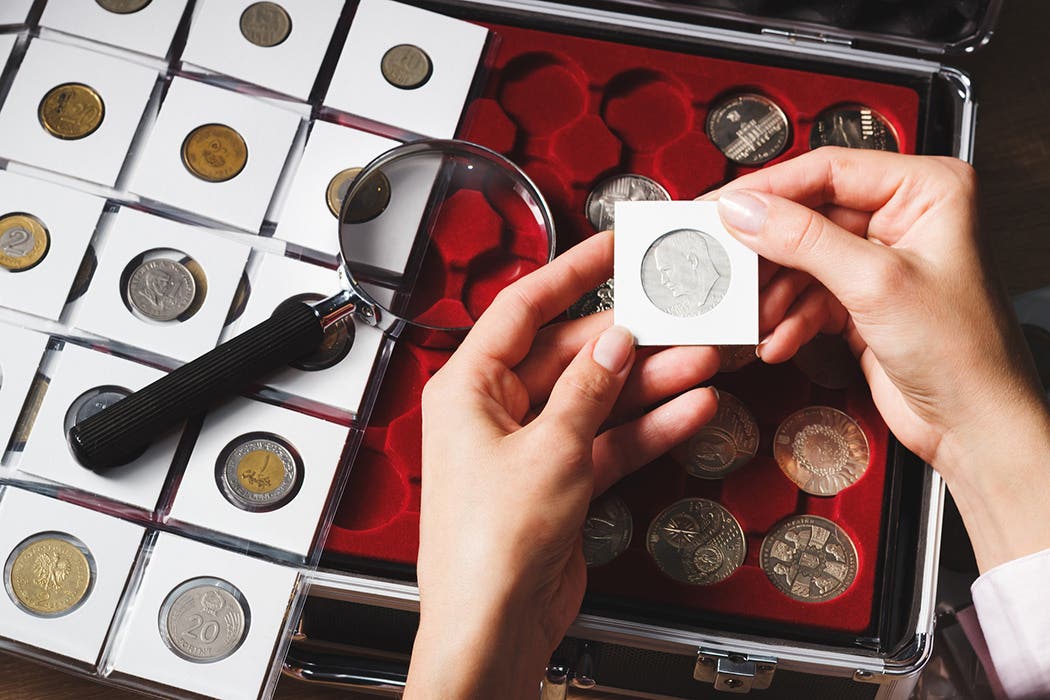Precise Number of Coin Collectors Unknown
Everything you ever wanted to know about coin collectors but were afraid to ask.

Do we know how many coin collectors there are in the United States?
It is challenging to arrive at a reliable number since there are many closet collectors who never share their interests with anyone outside their own family. In 2022, Civic Science reported: “38 percent of U.S. adults have experience collecting coins, whether they currently collect or used to. On the other end, more than half (55 percent) have no experience, and the remaining seven percent intend to collect coins in the future.”
Has anyone determined a profile of the typical coin collector?
The same Civic Science survey found some interesting “trivia” about coin collectors. Their 2022 survey indicated about half of coin collectors do volunteer work (compared to about a third of non-collectors), that coin collectors are about twice as likely to leave a negative online review if they don’t like a product, about 60 percent of collectors follow current events to some degree (compared to 40 percent of non-collectors) and about 40 percent of coin collectors are National Hockey League fans (as compared non-collectors making up about 25 percent of NHL fans).
Are there any reliable statistics to indicate if coin collecting is expanding or contracting?
There are no hard statistics from which to study the growth or contraction of coin collecting. Price increases and decreases will suggest the level of demand for coins; however, many coins are also impacted by the fluctuations in the spot price of metals of which they are comprised. The number of bidders at auctions, prices realized at auctions, attendance at coin shows, and attendance at local club meetings are also useful co-incidence barometers.
What is the personality of the typical coin collector?
There are many studies, many of these studies being controversial. In a 2021 paper by Jens Kleine, Thomas Peschke, and Niklas Wagner, published in the Journal of Behavior and Experimental Finance, the authors conclude: “The implications of our results suggest that individuals with particular personality traits, especially people with high openness, are more likely to possess collectibles than others.”
You may also like: How Does Restoration Improve Coins?
Are there any statistics on the interest in coin collecting by gender or race?
According to Zippia.com, the ratio of approximately 62 percent males and 38 percent females among coin collectors hasn’t changed much since the Zippia survey began in 2010. The racial mix of about 59 percent “white” to about 26 percent Hispanic or Latino, about eight percent “black or African American,” and about seven percent of what I will lump together as “other” hasn’t changed much throughout the period of the survey.
Are there different classifications into which individual coin collectors could be defined?
In 2009, CoinsWeekly.com Publisher Dr. Ursula Kampmann suggested the following: the classic hunter seeking to complete a collection, the speculator, the aesthetic, the perfectionist, “the rubbish chute” (wants to collect everything), the self-exposer (wants to leave a monument to himself), the researcher, the local patriot (wants to possess everything within an area of collecting), and the historian.
Rather than get my ancient coins slabbed at a significant cost, why can’t I just buy plastic holders in which I can encapsulate them?
There are some excellent plastic coin encapsulation devices available. There are also some excellent 2-by-2 cardboard holders. The upside to these is not only protection for your coins, but you can easily take them out of the encapsulation device if you please. The downside is you might trap moisture in the holder, there is no guarantee of authentication, and you have no additional professional assessment of the coins’ condition, quality of strike, or style.
Of what should I be aware if I want to put my coins into cardboard 2-by-2 holders?
The cardboard should be sulfur-free. The window covering should be composed of a thin layer of Mylar (polyester film). Ensure the staples holding the holder are not too close to the coin. Flatten the staples for safety. Also, be aware the staples should be removed prior to removing the coin from this type of holder to avoid scratching the coin.
Any general advice about what to consider when deciding how to house my coin collection?
Environment, mishandling prevention, and security are the top considerations. You need to keep your coins in a stable, cool, and dry environment. While you may choose to examine your coins closely, you don’t want unwanted fingerprints or the like to appear later due to mishandling. Security speaks for itself. You don’t want to advertise where your collection is stored due to where it is kept or that the storage unit is too obvious.
How can I tell if the cracked planchet on my coin happened during the minting process or later?
A cracked planchet can occur before, during, or after the minting process. The edge and nearby ridges will display slight anomalies on a cracked planchet coin where the crack occurred prior to the minting process. Those cracked planchet coins on which the crack occurred during or after the minting process will result in a somewhat broken coin. A cracked planchet may not have been properly annealed at the mint.
How does a lamination error differ from a cracked planchet error?
Lamination errors usually occur on sold-alloy coins and can occur either before or during the striking process. The surface of the coin will display cracks and flakes. The lamination problem is caused by contaminants that cause metal separation along the horizontal plane of the coin surface. Do we know how many coin collectors there are in the United States?
It is challenging to arrive at a reliable number since there are many closet collectors who never share their interests with anyone outside their own family. In 2022, Civic Science reported: “38 percent of U.S. adults have experience collecting coins, whether they currently collect or used to. On the other end, more than half (55 percent) have no experience, and the remaining seven percent intend to collect coins in the future.”
You may also like: Pine Tree Significant to Massachusetts
E-mail inquiries only. Do not send letters in the mail. Send to Giedroyc@Bright.net. Because of space limitations, we are unable to publish all questions.








